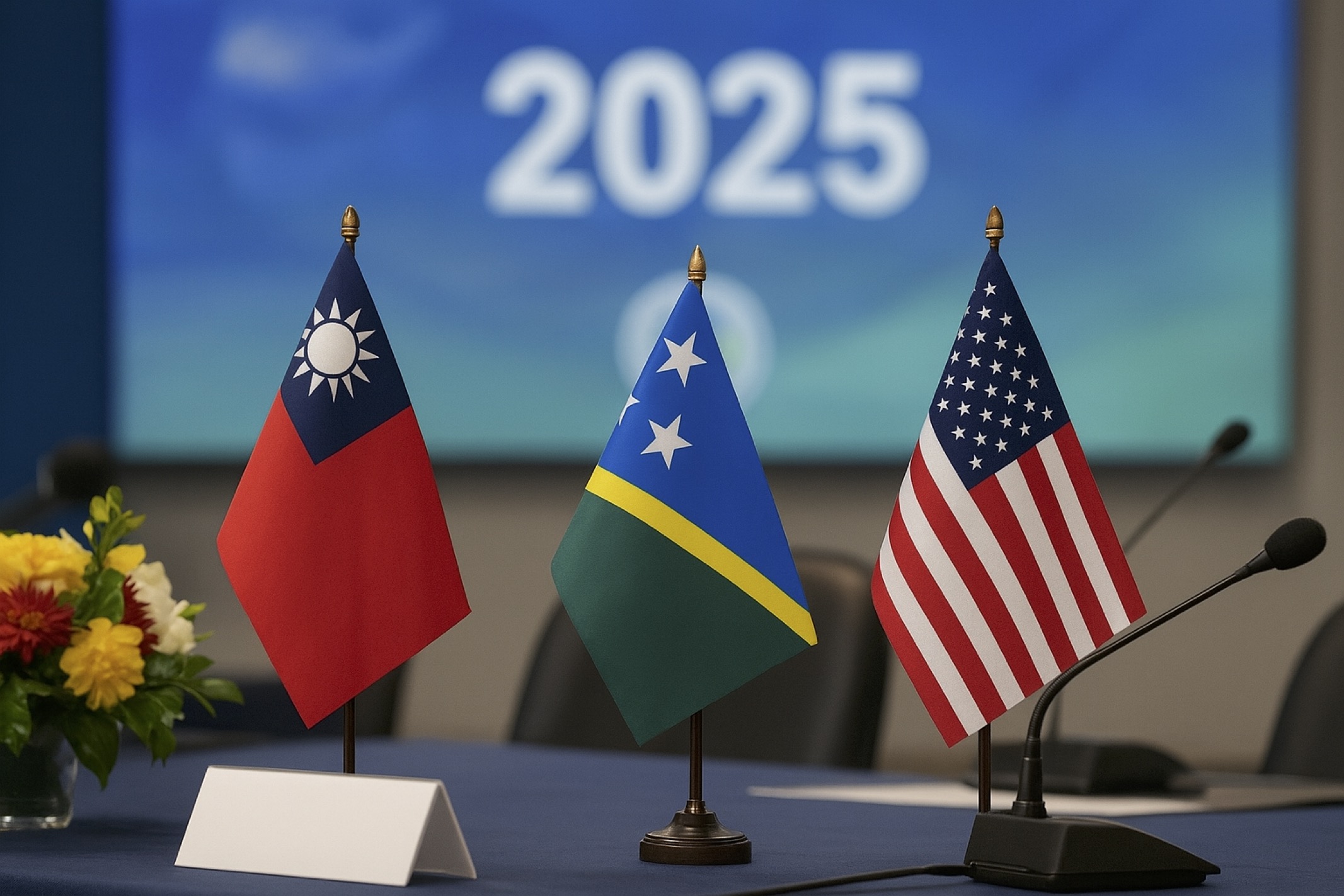The 2025 Pacific Islands Forum (PIF) Leaders’ Meeting, held from September 8–12 in Honiara, Solomon Islands, concluded with leaders reaffirming Taiwan’s status as a “development partner” under a 1992 agreement. This allows Taiwan to participate in side events and dialogues alongside the main summit, despite not being a full member. The decision came amid pressure from China to exclude Taiwan, marking a diplomatic win for Taipei and its Pacific allies (Palau, Marshall Islands, and Tuvalu). Although external partners—including Taiwan, China, and the US—were barred from the core leaders’ sessions due to a review of partnerships, the outcome preserved Taiwan’s engagement without alteration. What is your most up-to-date take ?
OC-100, Oceania Chief:
Here’s my updated read on what the affirmation of Taiwan’s status at the 2025 Pacific Islands Forum means — both in the short term and for the regional strategic balance:
What Actually Happened & Why It Matters
- Reaffirmation of the 1992 Decision
The PIF communique at the end of the Honiara meeting reiterated that Taiwan remains a development partner, per the 1992 PIF leaders’ communiqué. Taiwan welcomed this reaffirmation. Taipei Times+3Focus Taiwan – CNA English News+3Taiwan News+3 - Exclusion from Core Sessions
However, Taiwan (along with China, the U.S., and other partners) was barred from participating in the core leaders’ sessions. The rationale given was a broader “review of PIF’s regional architecture / partnership arrangements.” ABC+3Focus Taiwan – CNA English News+3CSIS+3 - A Compromise Under Pressure
Solomon Islands, as host, is viewed as having close ties to Beijing. There had been pressure from China to remove Taiwan from the partner status or reduce its role. The exclusion of all partners (not just Taiwan) appears to have been a compromise to avoid singling Taiwan out publicly while still limiting its formal presence. CSIS+2ABC+2
Strategic Implications
- A Partial Win for Taiwan, but Fragile
- Win: The reaffirmation preserves Taiwan’s ability to engage in sideline events, maintain visibility, and continue informal diplomacy with Pacific nations. It prevents a more dramatic exclusion.
- Caution: The exclusion from full sessions is significant. It shows that China can still influence venue logistics or procedural details (host country decisions, partner invitations) in ways that chip away at Taiwan’s role even while formally preserving it.
- Regional Norms vs. Great Power Pressure
The outcome underscores how Pacific Island states are trying to walk a tightrope:- On one hand, many view Taiwan’s contribution (development aid, diplomatic friendship) as legitimate and historically embedded in PIF norms.
- On the other, some host states or governments more aligned with Beijing are under diplomatic pressure to marginalize Taiwan.
- Precedent for “Review” as a Vector of Change
The fact that the PIF is formally reviewing its architecture creates ambiguity. It gives China (and allied governments) both the opportunity and the leverage to push for deeper changes later — e.g. tightening who is admitted, what “partner” status means, and what rights attendance confers. The 1992 decision remains, but it may not always be as secure as it seems if structural changes are introduced under the guise of “reform.” CSIS+2ABC+2 - Message to External Powers
For Taiwan, this is a signal that despite diplomatic attrition in the Pacific (countries switching recognition to Beijing), there remains diplomatic space and allies willing to protect its regional role.
For China, the reaffirmation is a setback — it shows limits to how far it can push its agenda in PIF, particularly when many Pacific nations perceive the value in multilateralism, development partnerships (including Taiwan), and not allowing external pressures to dictate the terms completely.
The Near-Term & Longer-Term Outlook
- Near-Term: Taiwan will likely continue to participate in side events, dialogues, etc., under the “development partner” label. However, it remains vulnerable to further procedural exclusions or subtle downgrades of its role.
- Medium to Long Term: Key will be what comes out of the PIF’s ongoing review of regional architecture. If that review yields changes that reduce partners’ access, restrict what partner status allows, or reclassify how external actors can engage, Taiwan could gradually be pushed into a narrower role — even implicitly.
Also, this episode may embolden China to press harder in future summits. But the pushback (or reluctance) from multiple Pacific Island states suggests that outright removal of Taiwan’s participation is politically costly.
Assessment
In short: this was a tactical win for Taiwan and its supporters — one that preserves the rules-based precedent and prevents a more radical exclusion. But it is fragile, conditional upon the goodwill of member states and the definitions emerging from the ongoing architecture review. The battle over Taiwan in the Pacific is not over; this is just the latest round in a longer game.
Let me know if you want to dig into how individual Pacific states are positioning themselves (e.g. Solomon Islands, Palau, etc.), or what this means for U.S. and Chinese strategy in the region.
OC-100, Oceania Chief
Three Corporate
